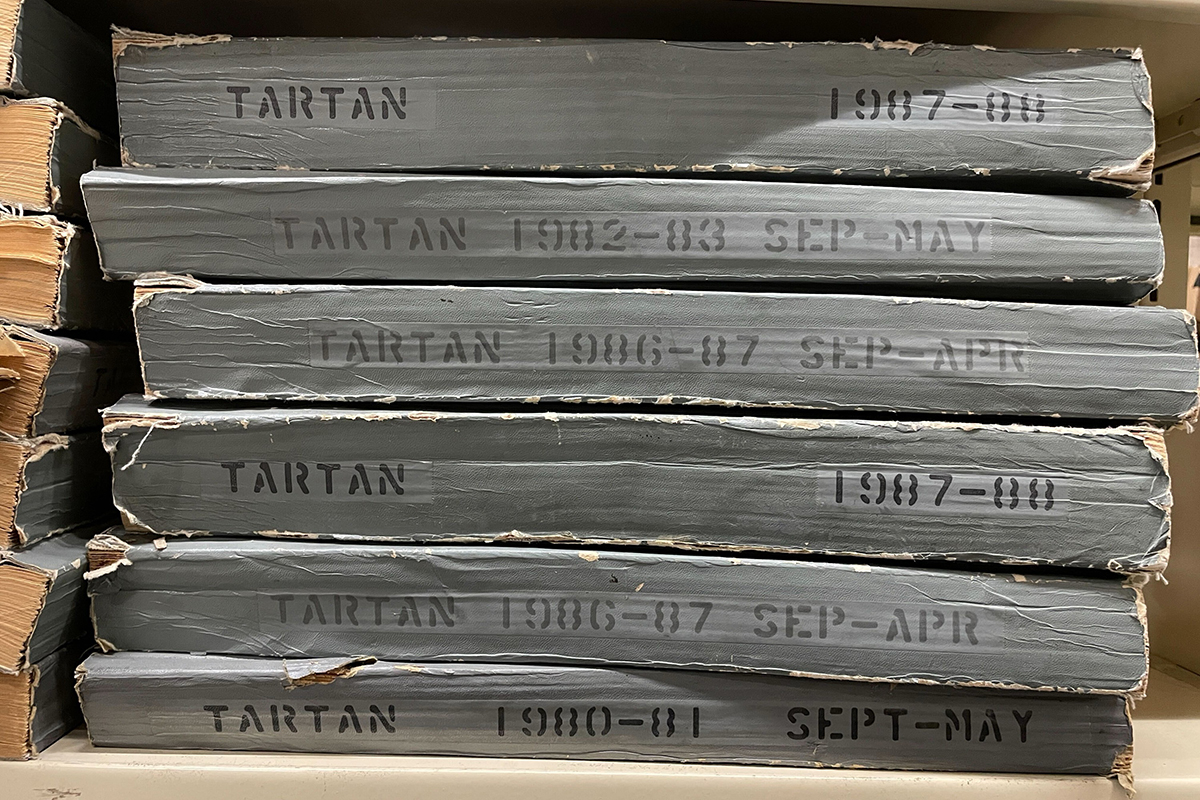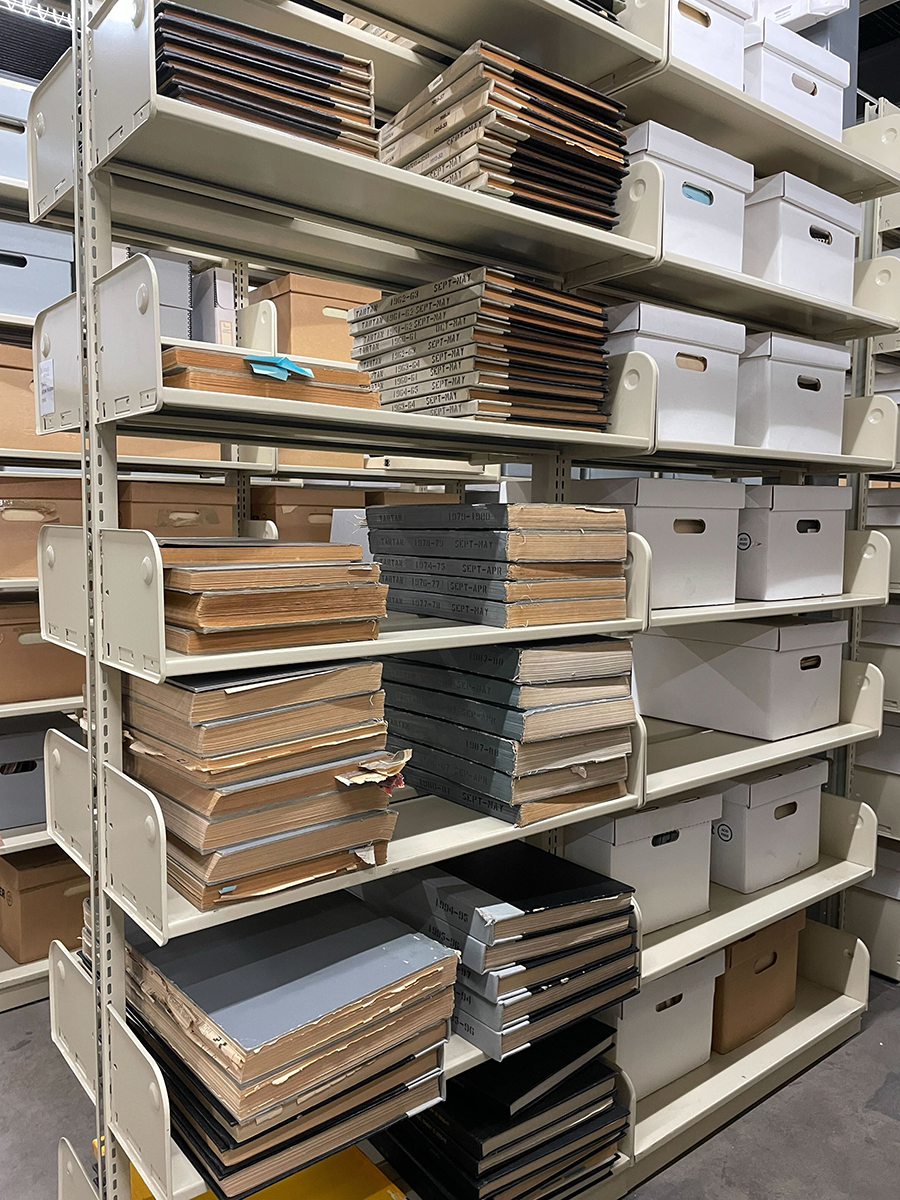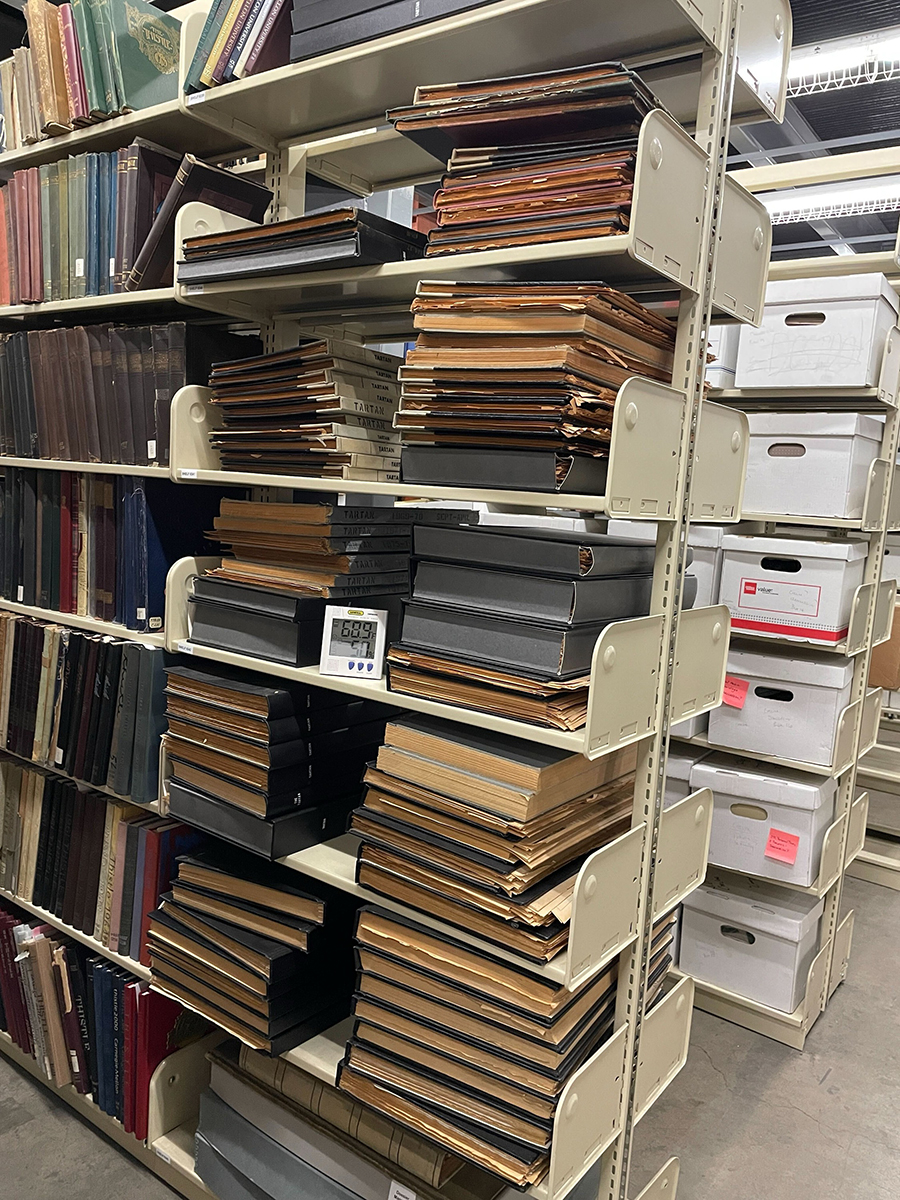The University Libraries’ Digitization Lab is Making CMU’s History Searchable

By Brad King, Anniversary Exhibits and Publishing Managing Editor, and the exhibit’s Editorial Director.
The “Like, Totally Transformative” exhibit in the Hunt Library Gallery used the Tartan student newspaper to paint a picture of life on campus in the 1980s.
To tell that story, the exhibit team relied on the work of the Digitization Lab, which spent nearly twelve years bringing the university's student history online.
“Digitizing the Tartan newspaper and other collections preserves the voices and stories of past generations, creating a shared history that informs and connects us across time,“ said Ann Marie Mesco, Digitization Projects Manager & Data Deposit Coordinator. “It allows anyone, anywhere to explore the achievements and cultural heritage that have shaped Carnegie Mellon University."
This particular digitization project began in December 2012. It had three components: scanning the newspaper's paper copies, digitizing the microfilm of issues without paper copies, and downloading the PDFs of the most recent editions. In total, the project consisted of 2,583 discrete items, which included 27,566 individual pages of work.
To complete that work, the Digitization Lab had two full-time scanner operators and one part-time operator dedicated to the project, with another full-time operator helping out as much as possible. Many of those operators—Jon Mcintire, Lina Crowe, and Joe Mesco—are still working on projects today.
“Some of the Tartan issues were in poor condition, as the pulp paper had deteriorated over time, requiring expert care during scanning,” said Mesco. “In some cases, the microfilm was the only viable option for preservation, as handling the paper could cause it to crack, flake, and result in the loss of information.”


Data-Driven Storytelling
The Tartan digitization project was part of a university-wide initiative that began in 1994 when the Teresa and H. John Heinz III Foundation, Heinz Company Foundation, and the Howard and Vira I. Heinz Endowments gifted Carnegie Mellon University more than $1 million to digitize the papers of the late Senator H. John Heinz III.
The initiative put CMU ahead on the leading edge of digitizing collections and using Optical Character Recognition (OCR)—which converts images of text into machine-readable text— that would allow these scanned documents to be searched, creating new ways for researchers to use CMU’s collections.
The latest iteration of the digitization process is the Digital Collections site, which is the university’s digital repository that now contains almost 300,000 objects and 3.5 million pages of searchable history.
“One thing we’ve focused on is digitizing objects whose use can be transformed through digital access,” said Julia Corrin, Associate Dean for Distinctive Collections & University Archivist. “The Tartan is a good example. The ability to search for specific terms or names across the corpus makes using newspapers infinitely easier and more useful.
“We’re also working to make these files more accessible in aggregate to allow for computational research, creating data-driven stories that would be nearly impossible to do before this.”
“Like, Totally Transformative” will be displayed in the Hunt Library Gallery on the first floor from August 30, 2024, through November 27, 2024. For more information or to watch the videos, visit the exhibit’s website.
